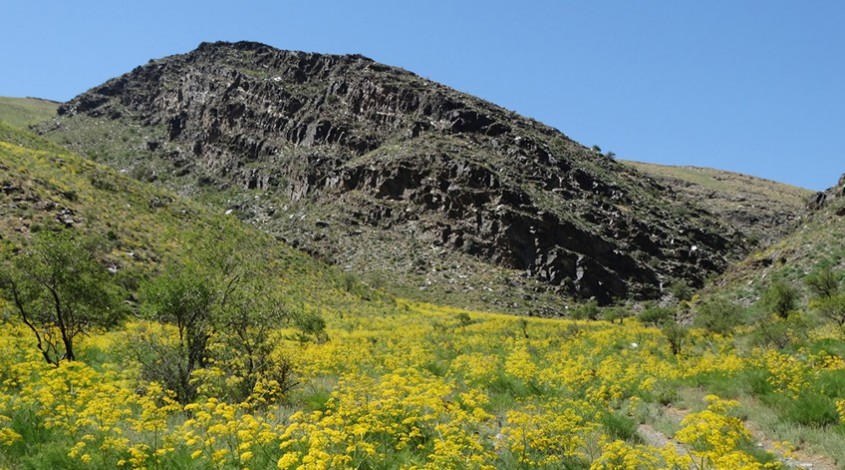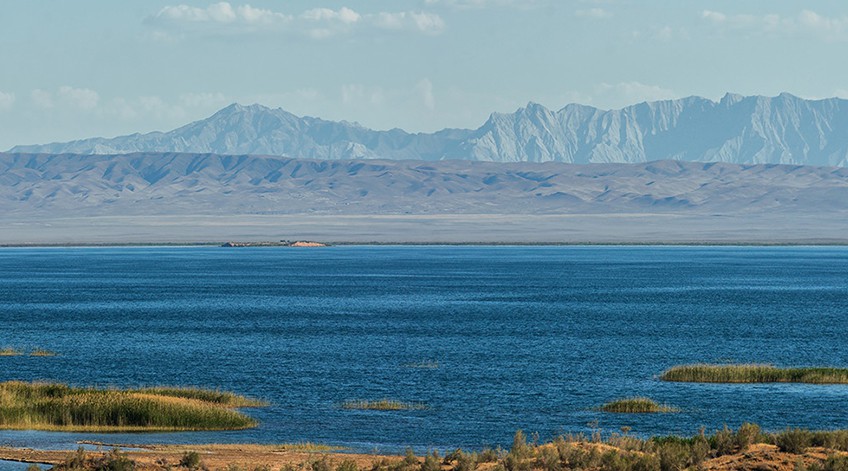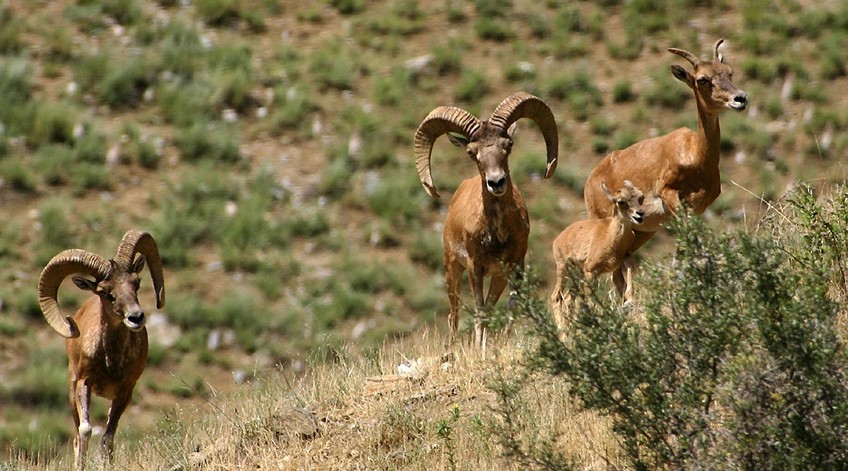

Uzbekistan, being in the very heart of Asia, occupies an excellent place regarding both climate and variety of flora and fauna. It’s no wonder that there are many protected areas or special nature reserves in this country, one of them being Nurata Nature Reserve.
It was created in 1975 in order to preserve the species of Severtsov mountain sheep (which was endangered at that time), a rare species of trees and some plants. Soon the list of Red Book species of animals and plants bred here expanded. Today there are more than 800 species of plants, 29 of which are included in the Red Book, within the nature reserve. The animal life here is varied too: 34 different types of mammals and 21 species of reptilians live here.
Due to its location at one of the routes of migrating birds it is possible to meet up to 196 avians here at various times of the year. More than one hundred of them gladly build nests and breed here. The terrain of the nature reserve is represented by Turan Lowland, mountain range and the desert of Kyzylkum. Therefore, both mountain inhabitants and those of plain regions can be encountered here. The enormous lake of Aidarkul spreads for 400 kilometers along the nature reserve. Ten creeks directed to it cross the nature reserve; some of them are small and therefore dry up by summer, having managed to bring just a bit of water from the mountains to the lake. Only some of large full-flowing creeks reach the river of Akdarya that joins one of the large rivers, which is Zeravshan. Alas, the only species of fish living here is Schizothorax (marinka).


Due to the shrinkage of the Aral Sea many animals moved to the nature reserve and found a place to stay at the Aidarkul Lake. You can encounter wild hogs here and about 1,800 specimens of Severtsov mountain sheep, foxes, martens, wolves, and wildcats. At the bottom of the mountains there are many badgers and ferrets. The Red Book Central Asia cobra, moccasin, blunt-nosed viper and other dangerous animals live in the bottom part. Higher there are countless eastern racers and glass-snakes that are not dangerous at all. Many of the birds are predatory, like black vultures, golden eagles, short-toed eagles, bearded vultures and griffon vultures. The most interesting inhabitants also include black storks which build nests far from everywhere.
Apart from the nature reserve itself, there are also many other attractions of interest here. One of them is the thousand-year-old Oriental arborvitae. There is a legend popular among the local residents that this tree was planted by Alexander the Great himself. 5 or 6 persons can fit inside its trunk. Some believe that the tree is able to heal many diseases and make human life longer. Close to the tree there is a ruined mosque where the pilgrims still come to seek for miraculous healing despite its condition.
Lake Fazilman is no less remarkable. The historic Hanbandi dam built out of stone which still stands is located here. There is also the Majerum-Kala fortress here, around which the archeologists found a lot of artifacts of 3-4 centuries.


This nature reserve is a fascinating place leaving which feels uncomfortable. The authentic settlements (kishlaks) scattered within its territory alone say a lot. There used to be much less residents here; they lived on arable farming, therefore there are so many tame breeds of nuts and other trees here. Warm hospitality of the local residents is supported by telling funny stories about their kishlaks, part of which were even included in literature, stories about Nasreddin-effendi and other Oriental character.
Canaan Travel recommends gracing your vacation in Uzbekistan by paying a visit to Nurata nature reserve in order to completely experience the miraculous world of nature of mysterious East.
